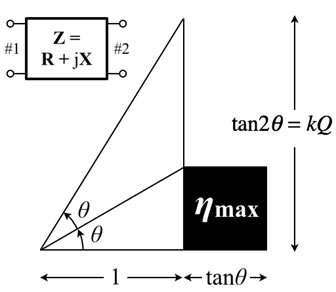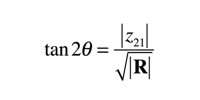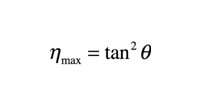Versatile design pilotage for wireless power transfer systems

Wireless power transfer (WPT) is expected to be a huge market for in-motion electric motor car powering as the fourth-generation personal mobility.
However, WPT engineers often lose their way in exploring high-efficiency power transfer structures. This is because there is only one design criterion called k-Q product which was proposed by MIT in 2007, where k and Q stand for coupling coefficient and quality factor, respectively. Although the criterion works well for optimizing the structure of coupled coils to produce strong magnetic resonance, it cannot be used in non-resonant or non-magnetic structures such as power transfer systems exploiting electric displacement current. A more versatile criterion could enable the engineers to find the optimum structure from wider options.
Now, Takashi Ohira at Toyohashi University of Technology has proposed an elegant design criterion called efficiency angle.
A power transfer system can be modelled as a black box consisting of ports #1 and #2, and passive elements inside. Ohira focused on its reciprocal impedance matrix Z = R + jX, and heuristically introduced angular parameter θ that satisfies,

where z21 is a nondiagonal component of matrix Z, and |R| denotes the determinant of matrix R. The double-angle tangent reduces to k-Q product in resonant systems, and even works in general power transfer systems as a lucid pilotage for designers. They no longer need to know resonance or coupling conditions, but just simply to know Z.
The tangent square physically implies the system's maximum available power transfer efficiency,

which monotonously increases with θ as well as tan2θ. Refer to the chart illustrating how to graphically estimate the maximum efficiency from given Z via angle θ. By employing this chart, Ohira's team successfully developed a via-wheel power transfer system for running vehicles and demonstrated its validity and effectiveness.
Once the WPT engineers master the efficiency angle theory, then they should be able to open up their vista to discover drastically wider ranging ways in research and development of future power transfer systems.
More information: Takashi Ohira, "Maximum available efficiency formulation based on a black-box model of linear two-port power transfer systems." IEICE Electronics Express Vol. 11 (2014) No. 13 pp. 20140448 dx.doi.org/10.1587/elex.11.20140448
Provided by Toyohashi University of Technology


















